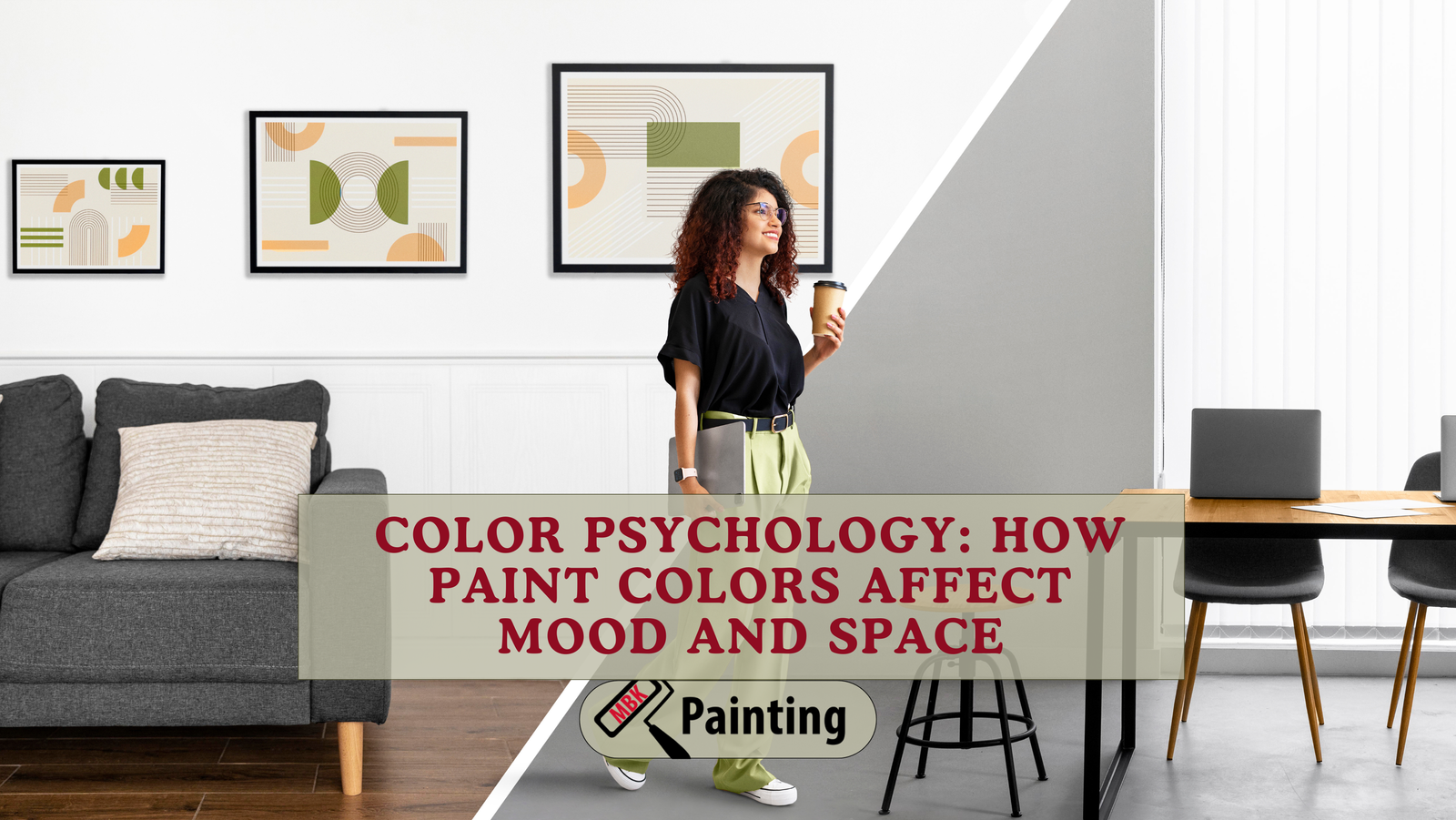When it comes to interior design, one of the most powerful tools at your disposal is paint. The colors you choose for your walls can do more than simply brighten up a room; they can significantly influence the mood and energy of the space. Color psychology is the study of how different hues affect human emotions and behaviors, and it’s a key factor in choosing the right paint colors for your home.
Understanding how paint colors impact mood and space can help you create an environment that is in tune with your desired emotional state, whether you want a calming retreat or an energizing workspace. In this article, we’ll explore the psychological effects of color, how different shades influence our feelings, and how to select the right colors for various rooms in your home.
1. The Power of Color Psychology
Color psychology is based on the idea that certain colors evoke specific emotional responses in people. These reactions can be influenced by cultural associations, personal experiences, and even biological factors. For example, warm colors like red and yellow tend to evoke excitement, while cool colors like blue and green promote calm and relaxation.
As you consider your home’s color palette, it’s important to think about the atmosphere you want to create. Whether you’re designing a peaceful bedroom, a vibrant kitchen, or a creative office, understanding color psychology can help you make informed choices that enhance the overall vibe of your space.
2. Warm Colors: Energizing and Stimulating
Warm colors, such as red, orange, yellow, and pink, are known for their stimulating and energizing effects. These hues are often associated with warmth, passion, and excitement. In a home setting, warm colors can make a space feel more inviting and lively, but they can also increase energy levels and even stimulate conversation.
- Red: Red is a bold and intense color that can evoke feelings of passion, love, and urgency. It’s often used in dining rooms or living rooms where you want to encourage social interaction. However, too much red can create an overwhelming or agitated atmosphere, so it’s best used in moderation.
- Orange: Orange is a friendly, enthusiastic color that combines the energy of red with the cheerfulness of yellow. It’s a great choice for spaces where you want to foster creativity and optimism, such as home offices, kitchens, or playrooms.
- Yellow: Yellow is often associated with happiness, positivity, and warmth. It can create a bright, cheerful environment, making it an excellent choice for kitchens, bathrooms, and even hallways. However, too much yellow can cause feelings of anxiety, so it’s best used in small doses or paired with other colors.
3. Cool Colors: Calming and Relaxing
Cool colors, such as blue, green, and purple, are known for their calming and soothing effects. These colors can help create a peaceful, tranquil environment, making them ideal for areas where relaxation and rest are the priority.
- Blue: Blue is one of the most universally loved colors, often associated with calmness, tranquility, and stability. It’s a great choice for bedrooms, bathrooms, and living rooms where you want to promote relaxation. Lighter blues are especially calming, while darker blues can add a sense of sophistication and depth.
- Green: Green is associated with nature, balance, and renewal. It promotes a sense of harmony and is known to reduce stress. Green is ideal for spaces like bedrooms, home offices, and living areas where you want to create a peaceful and revitalizing atmosphere.
- Purple: Purple, often associated with luxury and creativity, can have a calming effect, particularly in lighter shades like lavender. It’s a great color for bedrooms and meditation spaces, where a serene and contemplative mood is desired.
4. Neutral Colors: Balanced and Timeless
Neutral colors, such as white, beige, grey, and brown, are versatile and timeless, making them popular choices for home interiors. These colors act as a perfect backdrop for other colors and can create a balanced, peaceful environment. Neutral tones can also make a space feel more spacious and open.
- White: White represents purity, clarity, and simplicity. It can make a space feel airy and expansive, and it works well in both modern and traditional homes. However, too much white can make a room feel sterile, so it’s important to add warmth through furniture or decor.
- Beige and Tan: These soft, warm neutrals evoke a sense of comfort and reliability. Beige tones are perfect for creating cozy, inviting living spaces and work well in a variety of settings, from living rooms to bedrooms.
- Grey: Grey is a sophisticated, balanced color that can be both calming and dramatic. Lighter greys create a soft, peaceful atmosphere, while darker greys add a sense of elegance and depth. It’s an excellent choice for modern interiors or as a neutral base for bolder accent colors.
5. Choosing the Right Color for Each Room
When selecting paint colors for different rooms in your home, it’s important to consider the function of the space as well as the emotional effect you want to achieve. For example:
- Living Rooms: Warm, inviting colors like soft oranges, yellows, or warm neutrals create a welcoming atmosphere, while cool tones like blue or green can make the room feel calm and relaxed.
- Kitchens: Vibrant, energizing colors such as yellow, red, or orange stimulate the senses and encourage socializing, making them ideal for kitchens and dining areas.
- Bedrooms: To create a restful, peaceful environment, consider using calming blues, greens, or soft purples. These colors can help promote relaxation and improve sleep quality.
- Home Offices: A mix of energizing and calming colors works well in home offices. Consider a calming blue or green for focus and creativity, paired with accents of yellow or orange for energy.
Conclusion
Color psychology plays a crucial role in shaping the mood and energy of any space. By choosing the right paint colors, you can enhance your home’s atmosphere, improve your well-being, and create an environment that reflects your personal style. Whether you’re seeking a calming retreat or an energizing workspace, understanding how paint colors affect mood can help you design a home that feels just right.




